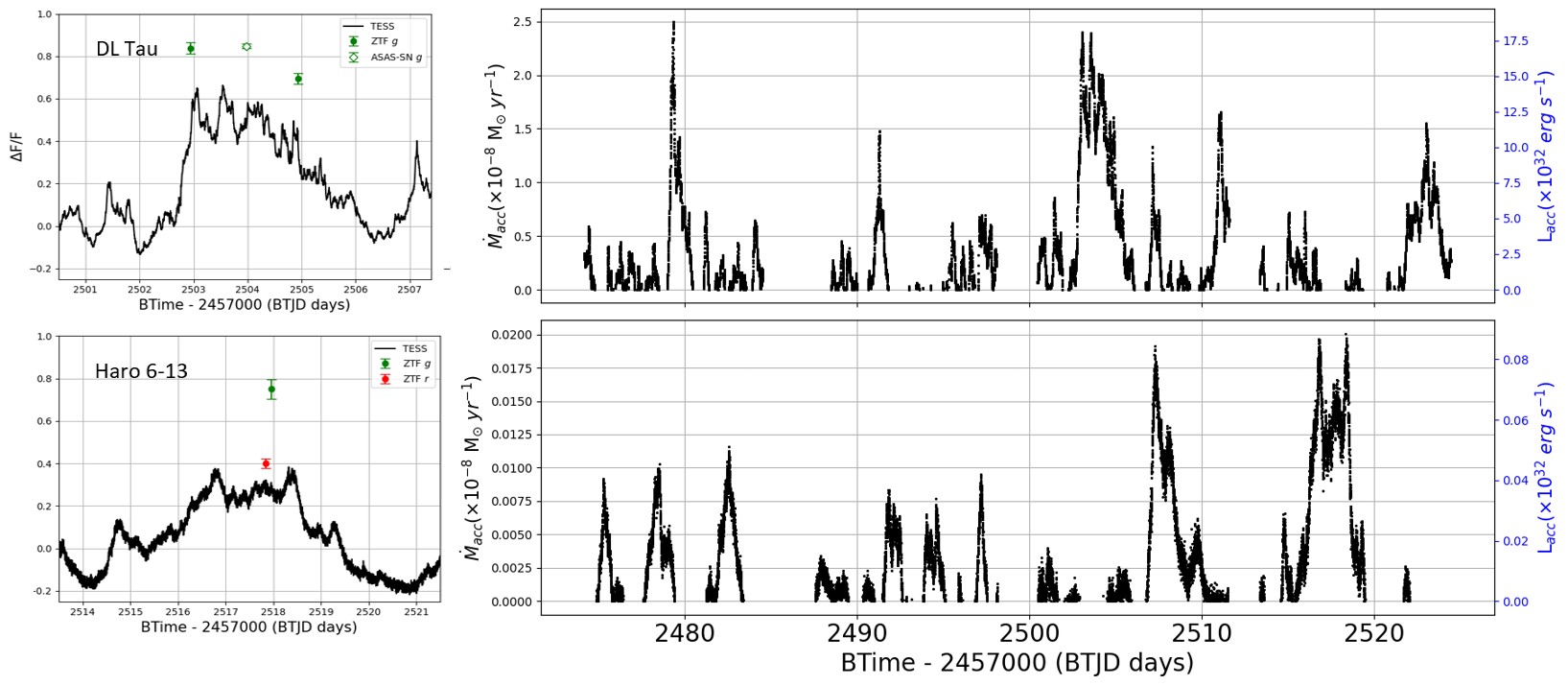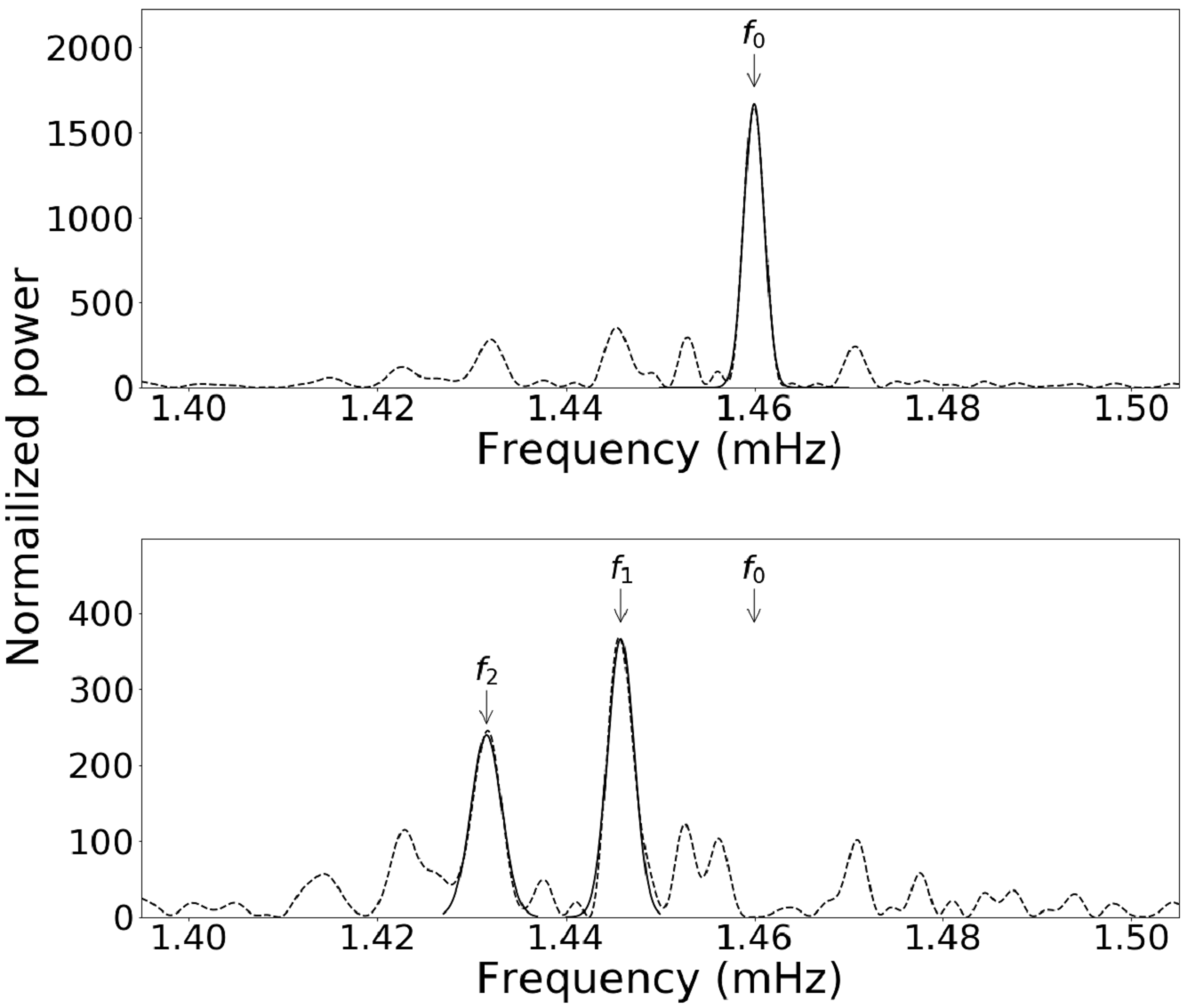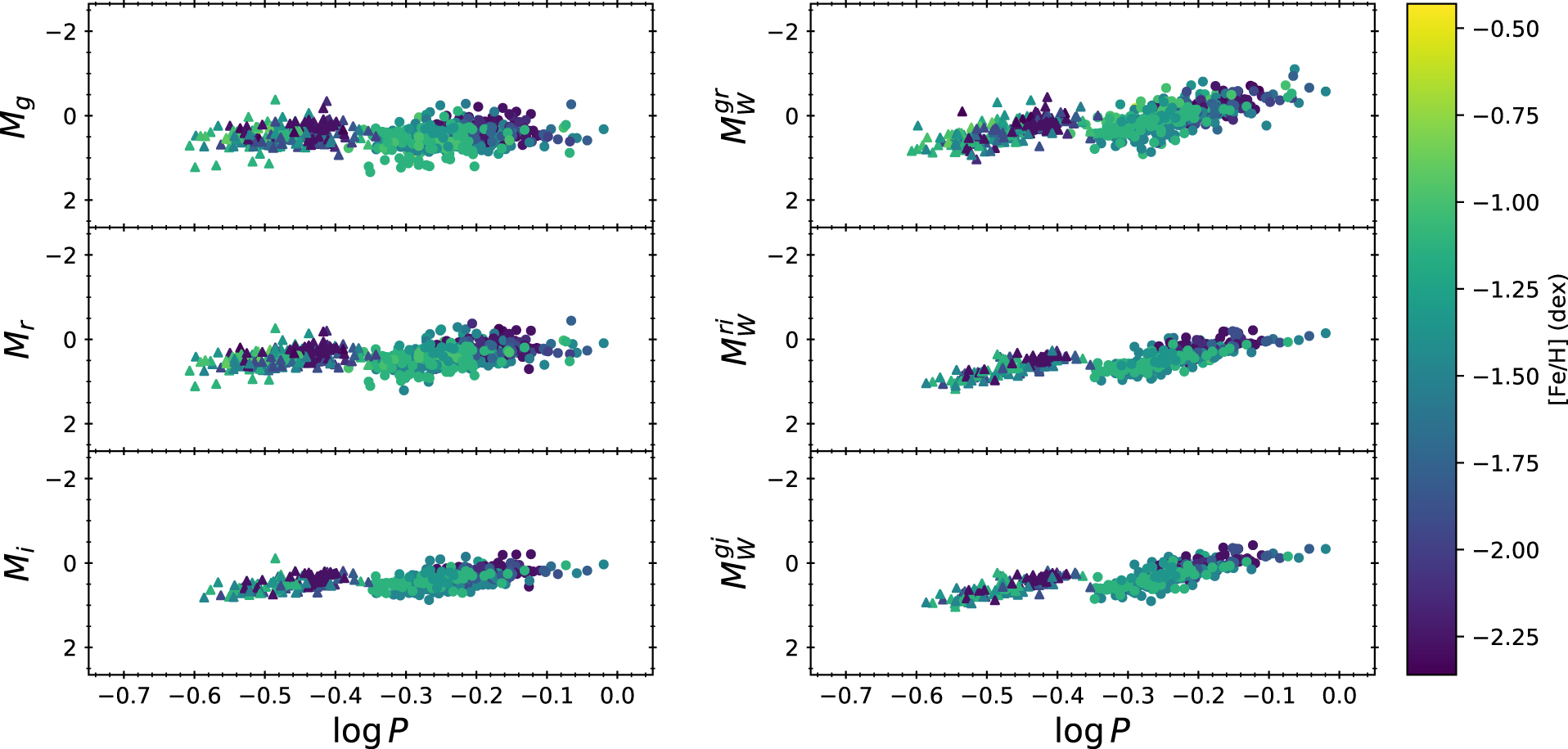Research column
Search: 2013 2014 2015 2016 2017 2018 2019 2020 2021 2022 2023 2024 2025
| 2023 | |
|---|---|
 | Caption: Temporal mass accretion rates during unstable accretion bursts. The upper panel shows DL Tau, and the lower panel shows Haro 6-13. The left side of the figure displays the simultaneous accretion luminosity bursts observed by TESS, ZTF, or ASAS-SN. The horizontal axis represents time (in days), and the vertical axis represents normalized flux. The right side of the figure presents the derived temporal mass accretion rates. The horizontal axis represents time (in days), and the left vertical axis (black) represents accretion rates (in units of M☉/yr), while the right vertical axis (blue) represents accretion luminosity (in units of erg/s).
|
 | Master student Yao-Wen Jhang and Prof. Yi Chou report the analysis results of X-ray light curves collected by Neutron star Interior Composition ExploreR (NICER) from June 2017 to July 2022 of the X-ray binary 4U 1820-30, located at the globular cluster NGC 6624. From the yearly orbital phases obtained by the orbital modulation light curves and historical records, we measured that the observed orbital period derivative is 1/P dP/dt = (-5.21±0.13)×10-8 yr-1 from a time span of 46.3 years database. No significant second order orbital period derivative can be found with 2σ upper limit of | d2P / dt2 | < 5.48×10-22s s-1. To explain the complete different orbital period evolution trends from theoretical prediction and observation result, we agreed that it is caused by the acceleration of the binary system in the gravitational field of globular cluster NGC 6624, as suggested by previous studies. However, we pointed out that it is improper to estimate the acceleration of 4U 1820-30 by observed orbital period derivative because there are too much uncertainties in the intrinsic orbital period derivative. Furthermore, we detected a modulation with a period of 691.6±0.7 s in the NICER X-ray light curves, which is consistent with the superhump period discovered in the far-ultraviolet band of Hubble Space Telescope. In addition to explaining how the superhump modulation can be detected in X-ray band, we also suggested that this periodic modulation may be induced by a hierarchical third star that orbits around the binary system. These results have been published in
Chou & Jhang 2023 ApJ, 951, 42.
|
 | Based on light curves data taken from ZTF and published distances, the team led by Prof. Chow-Choong Ngeow derived the gri-band period-luminosity (PL) relations for various types of pulsating stars located in the globular clusters. These include RR Lyrae, Type II Cepheids, and anomalous Cepheids. Many of these PL relations were derived for the first-time in gri filters, with potential applications in the era of Rubin Observatory’s LSST. These works are published in Ngeow et al (2022, AJ 163:239, AJ 164:154, and AJ 164:191).
|
